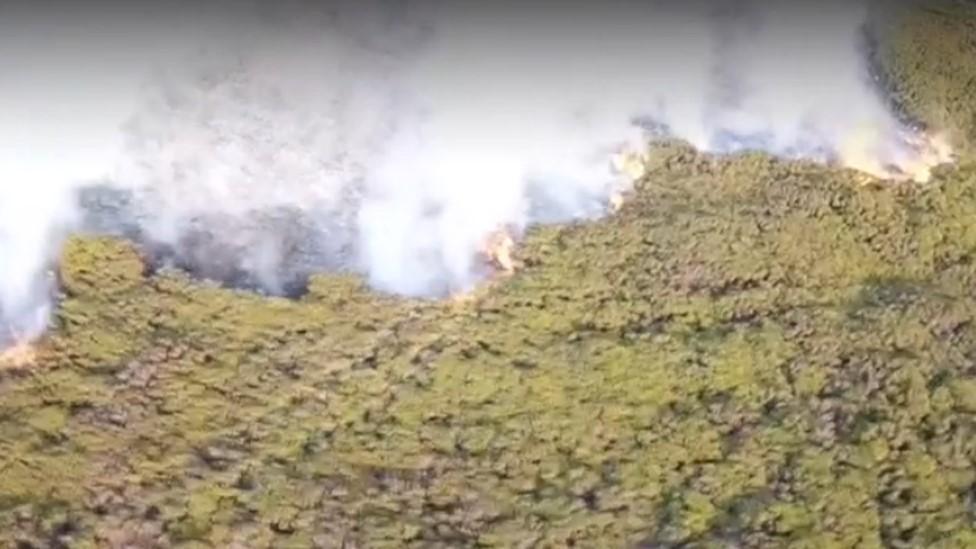Saddleworth Moor fire: Harmful fumes reached Irish Sea
- Published
Last year's hot, dry summer saw the north of England experiencing wildfires on an unprecedented scale
Moorland fires in the north of England spread harmful fumes as far as the Irish Sea, scientists have said.
Researchers flew a plane through the smoke plume to measure toxic fumes from the wildfires in the Pennines during last year's hot, dry summer.
Scientists calculated people living 100km (62 miles) downwind from the fire were exposed to pollution.
The impact on air quality has been described as "very similar to a moderate power station".
Saddleworth Moor set alight on 24 June 2018, with flames spreading across an area of seven sq miles (18 sq km), joining another blaze at Winter Hill.
By 27 June, there were traces of harmful fumes found off the Merseyside coastline.
Scientists tested for carbon monoxide, carbon dioxide, nitrogen dioxide, sulphur dioxide and tiny aerosol particles known as PM2.5 which, in high concentrations, can exacerbate lung and heart conditions, external.
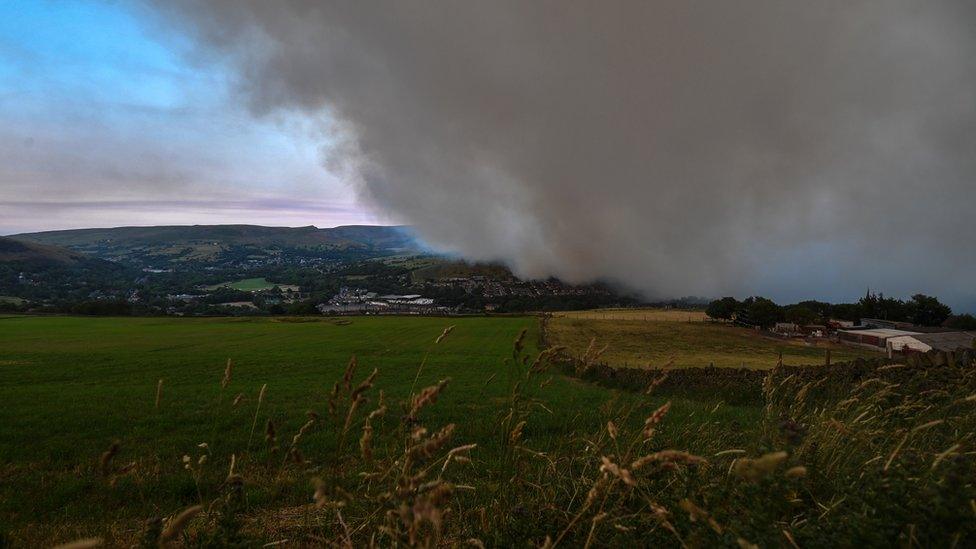
The fire broke out on an otherwise clear day and was so large it could be seen from space
During the fires, Public Health England issued health advice, external and there was an increase in the number of people calling ambulances because of breathing difficulties.
John Penrith, who lives near Liverpool and has a serious lung condition, said he got through 14 inhalers during a six-week period that coincided with the moor fires.
He said: "I was aware of them but I didn't really think anything of it because they were so far away."
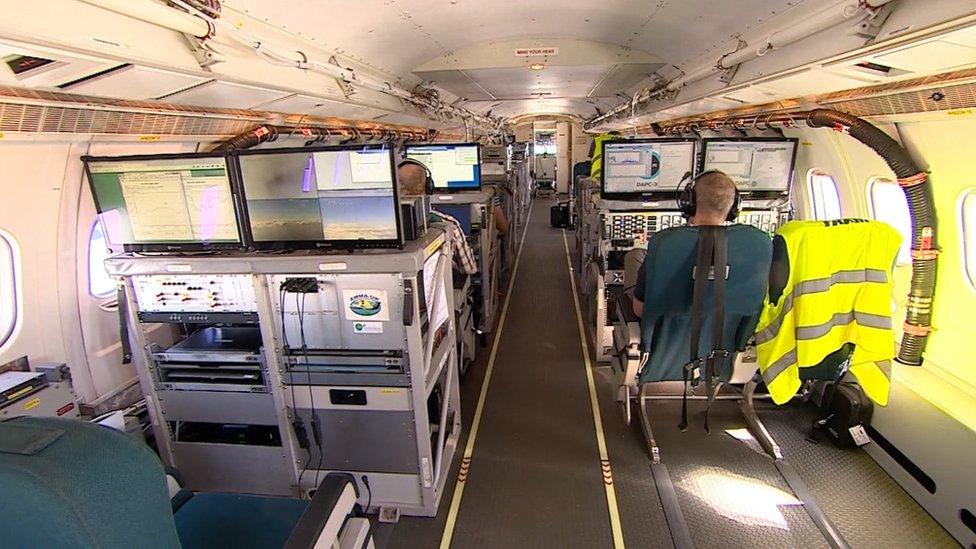
A converted passenger plane was flown through the plume of smoke
Weather conditions in late June meant there were no clouds except the smoke plume from the fire and this gave scientists a rare chance to test the air quality.
A group of climate scientists, led by the University of York, flew a plane through the plume to measure pollution levels.
Dr Richard Pope and a team of environmental scientists at the University of Leeds then analysed this information.
"Downwind, maybe 100km from the fire itself, you're still getting values which are about two to four times larger than the background concentration we estimate for carbon dioxide," Dr Pope said.
"We estimate that, from the fires on this day, the carbon dioxide was emitting at a rate very similar to a moderate power station such as Enfield."

Data from tropospheric monitoring instrument - or tropomi - measuring carbon monoxide, the red represents high levels of pollution with moderate in orange and low levels in yellow
Researcher Ailish Graham looked at PM2.5 which she described as "particularly dangerous to the public because they're small enough for us to breathe really deep down into our lungs".
She found there had been an increase in levels of PM2.5 as far away as Wigan - about 30 miles (48km) from the fire - with levels peaking at about five times what would be considered safe to breathe in.
"It had a really strong impact on air quality over the north west," she said.
"That's a lot of people who are going to be exposed to pollution."
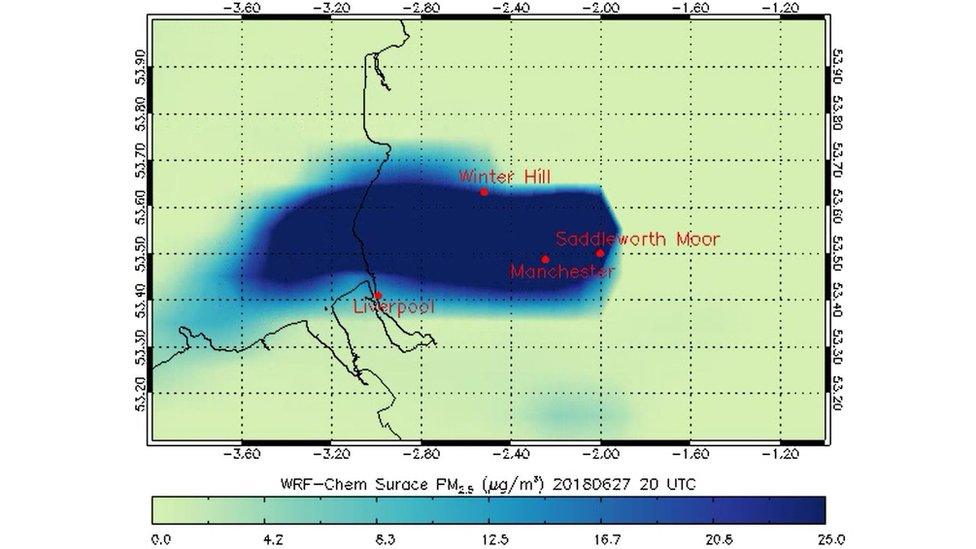
The World Health Organisation safe limit for PM2.5 is about ten micrograms per metre cubed. At the peak of the fires it went up to about 50 micrograms per metre cubed
Figures from the North West Ambulance Service show spikes in people calling about breathing difficulties reflecting the movement of the smoke plume as it drifted towards the Irish Sea.
For example, on 26 June reports of breathing difficulties in Manchester peaked at 50 while on 1 July reports in Liverpool peaked at 31.
However, these reports of breathing difficulties cannot be conclusively linked to the increased levels of pollution.
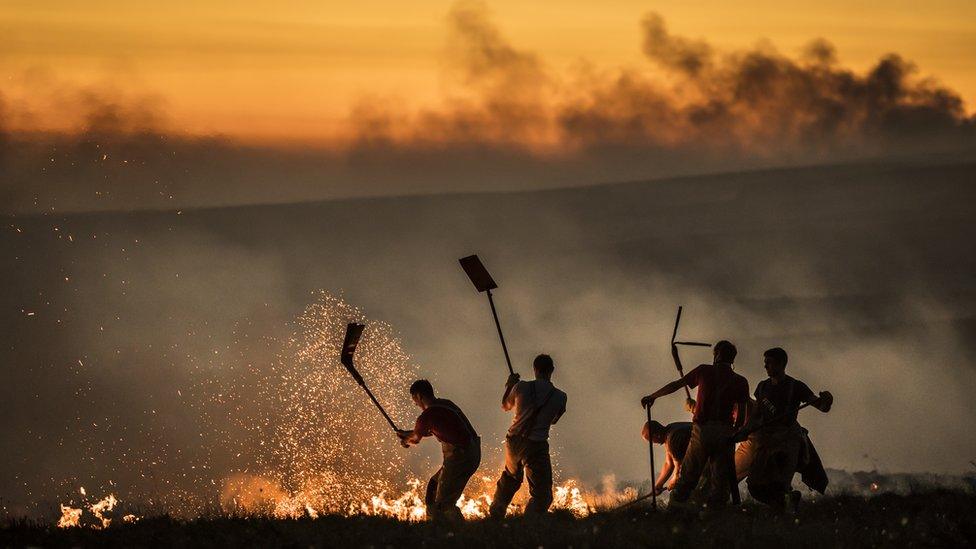
Firefighters and soldiers worked to tackle the fire, which took more than three weeks to put out
Public Health England has welcomed the research.
Consultant in health protection Dr Will Welfare said: "Smoke from any fire irritates eyes and passages, it particularly affects people with pre-existing conditions, we were worried about them and we aimed to reduce their exposure with immediate effect."
He said the research had added to an "overall understanding of plumes" which would help understand and reduce risks.
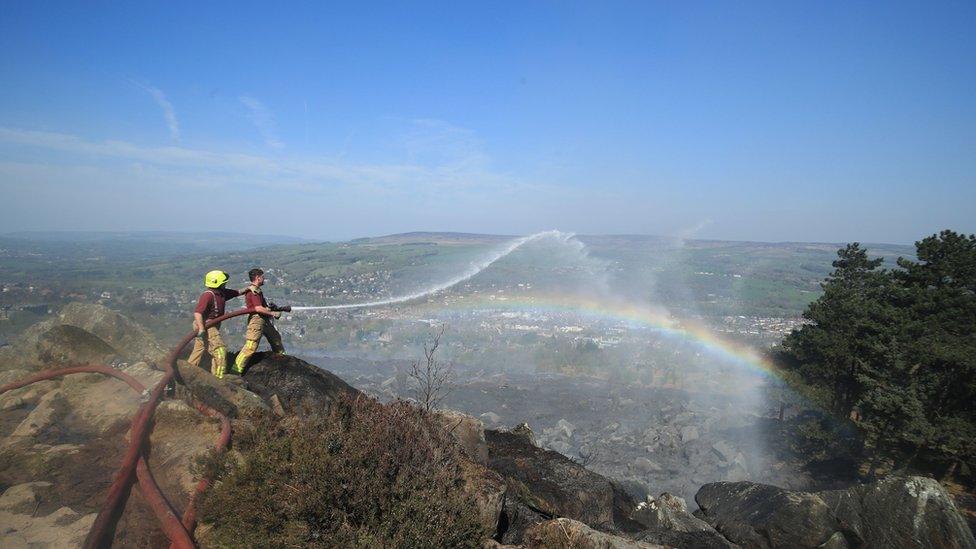
The Saddleworth Moor fire was followed by a large blaze on Ilkley Moor in April this year
Since the fires, local authorities have introduced barbecue and campfire bans on moorlands across the north of England and there has been a campaign to make the public more aware of the risks.
Inside Out looks into the health implications for those living downwind of moorland fires on BBC One at 19:30 BST on Monday 30 September and can also be seen afterwards on the iPlayer.
- Published17 December 2018
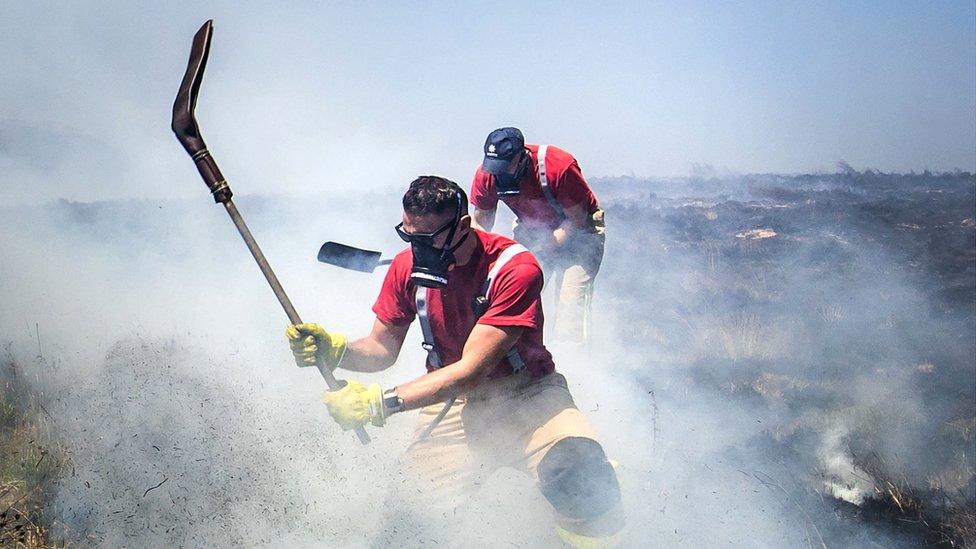
- Published18 July 2018
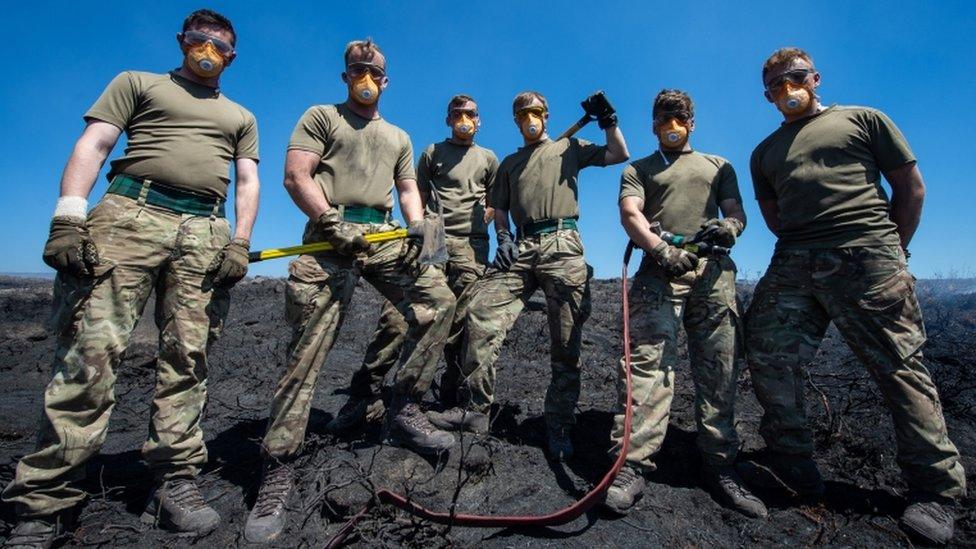
- Published4 July 2018
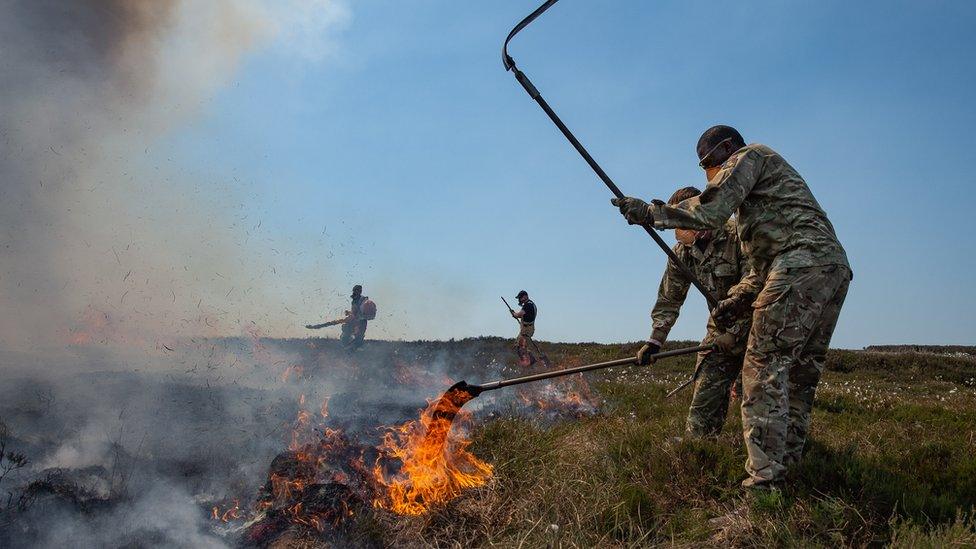
- Published27 June 2018

- Published26 June 2018
